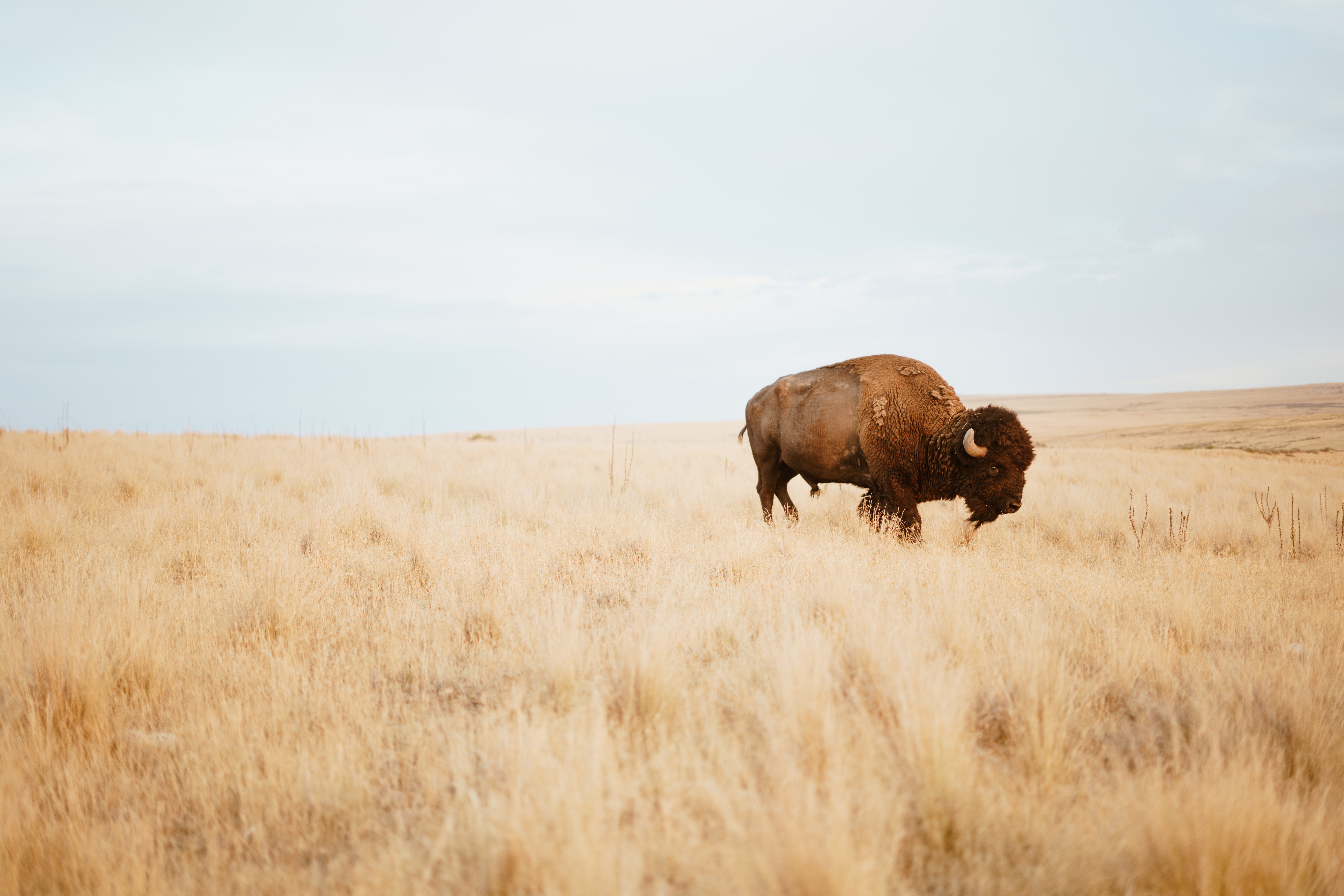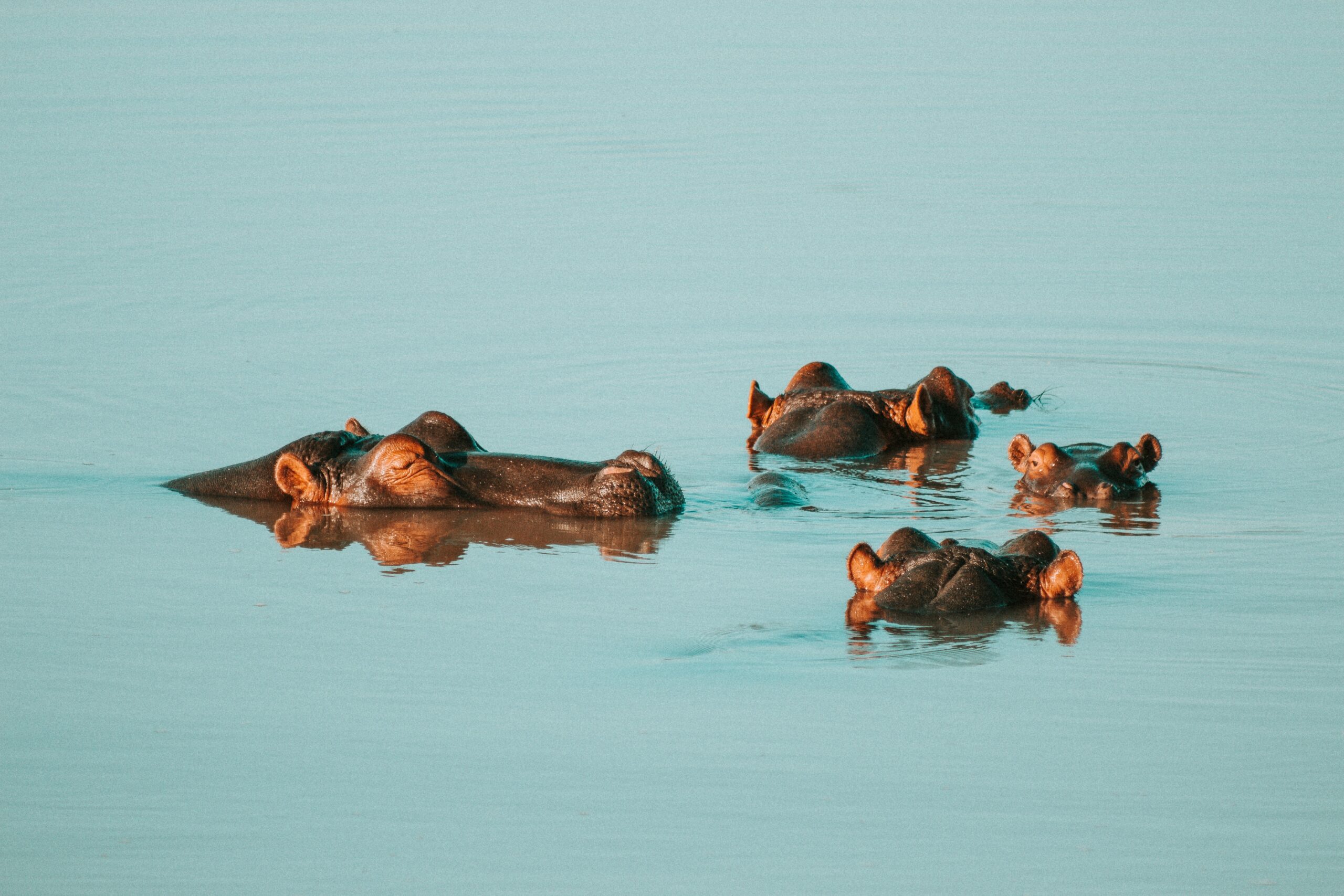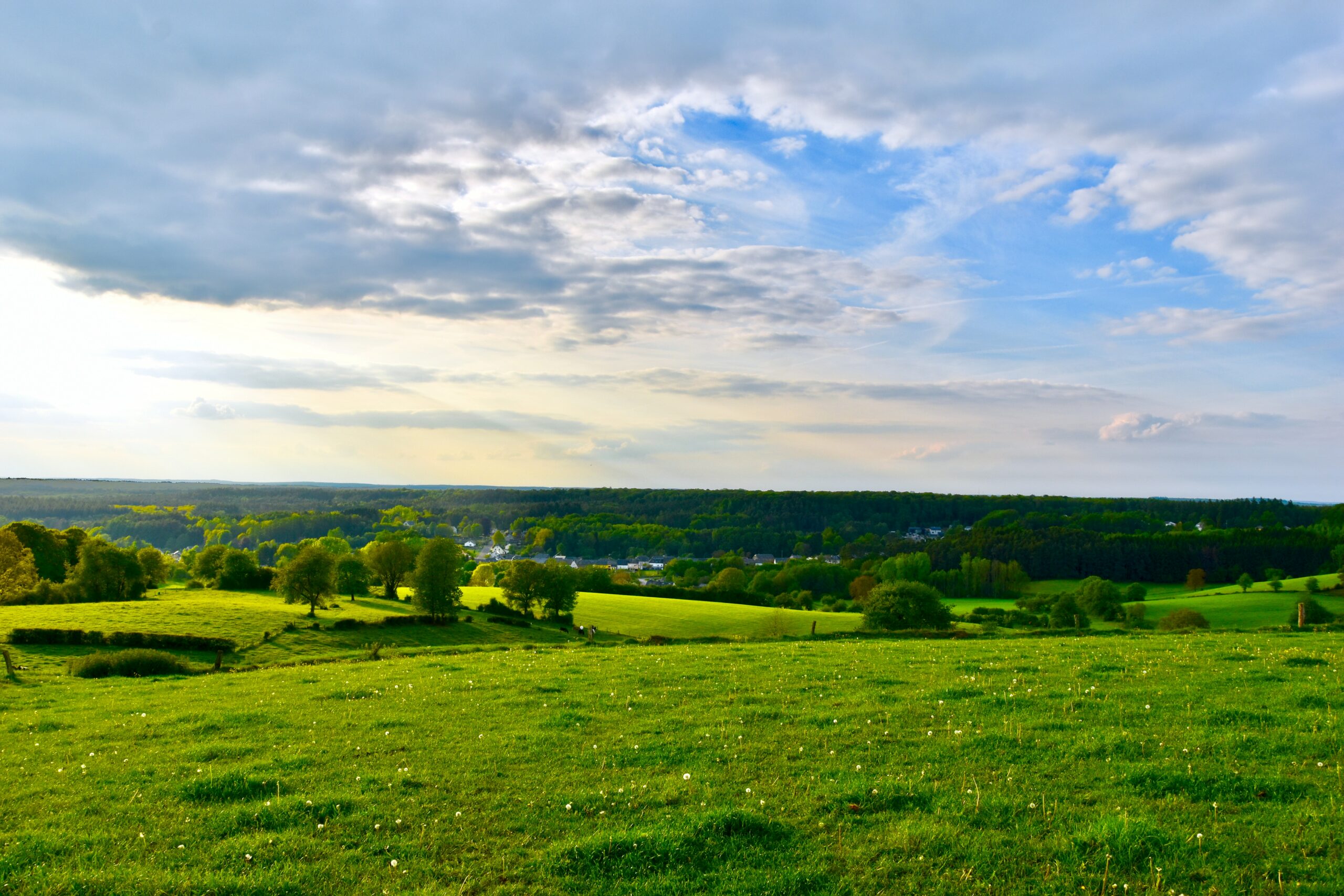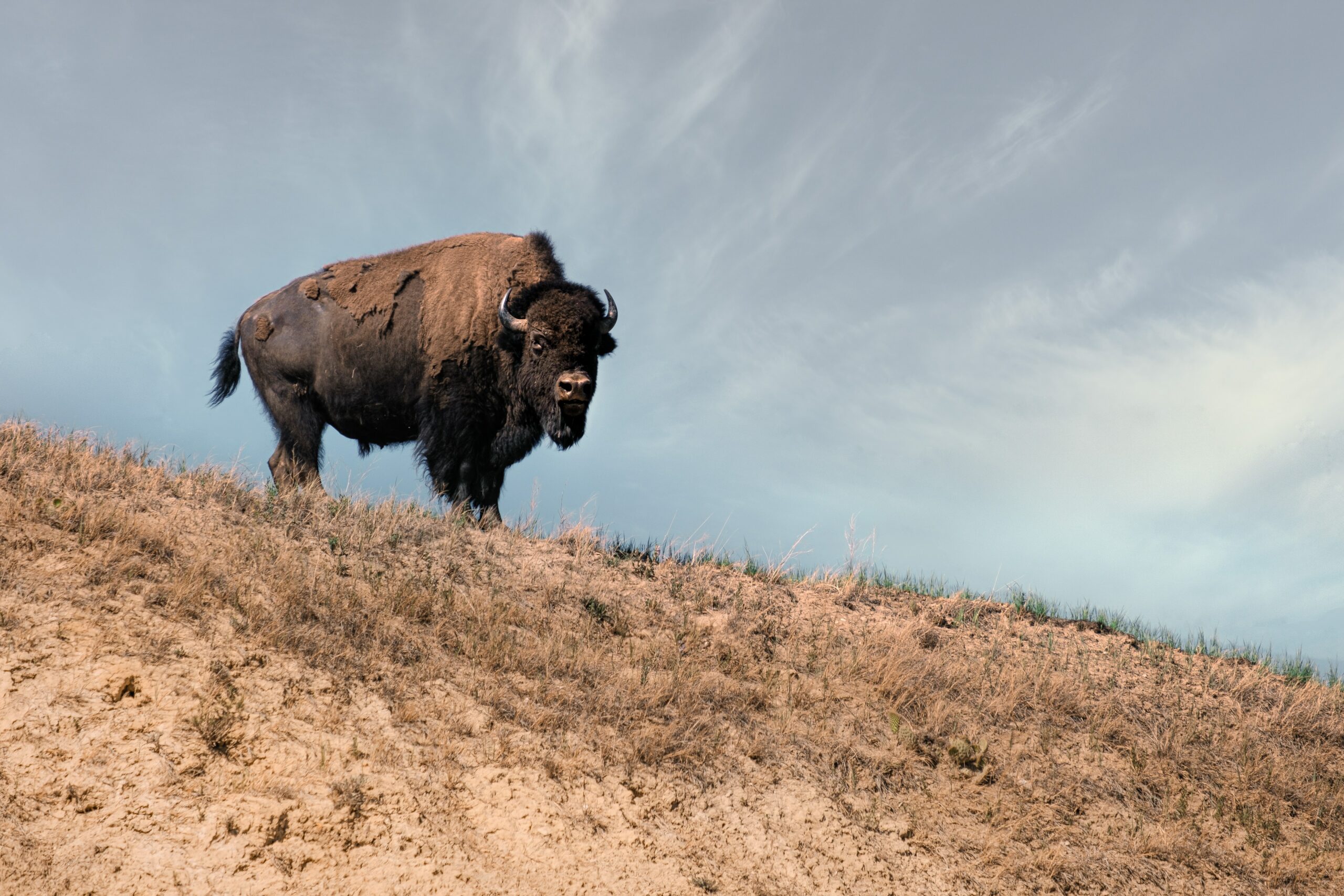
In 2022, something happened in Britain for the first time in 6,000 years. Deep in the Kent countryside, a wild European bison calf was born as part of the Wilder Blean rewilding project. The last time wild European bison roamed Britain’s landscapes was after the last Ice Age, some 10,000 years ago, so it’s no wonder the calf’s arrival caused a stir. European bison were once a common sight across most of Europe. As the largest herbivore to roam the continent, European bison could be found from France all the way to the tip of the Black Sea in the Ukraine. The fossil record tells us that European bison have been roving the continent since the end of the Paleolithic Ice Age, with the earliest fossils dating back to 9,000 BC.
Now, bison are bouncing back. They have experienced a 166-fold increase in their population in the last 50 years. And these rates of return are not solely the reserve of the mighty bison. Other wild European mammals are also making a roaring comeback, and the speed of their resurgence suggests that wider, rapid natural regeneration is possible with multiple ecological, and therefore human benefits.

From 1960 to 2016, Eurasian beaver (Castor fiber) populations have ballooned 167-fold, from just a few thousand at the start of the 20th century to over 1.2 million wild beavers today. Grey seal populations have also grown by 6,273 percent and the population of Alpine ibex has risen by 417 percent. Eurasian badger populations have doubled, while Eurasian otter populations have tripled.
While these impressive rates of recovery are not reflected across all of Europe’s 250 wild mammal species, they do provide some evidence-based hope that wild mammals can once again flourish across Europe’s diverse and varied landscapes with the right support and policies in place.
European bison, and other wild mammals that populated the continent, have suffered a dramatic decline over the last 500 years. Rising rates of deforestation, hunting and the steady growth of more intensive and industrial forms of agriculture have devastated wild mammal populations and fragmented habitats, pushing many to the brink of extinction. In fact, the last wild European bison died in Poland in 1919 and the species only managed to cling on due to 54 animals being housed and bred in various zoos across Europe.
At the hands of humans, wolves, lynx, ibex, boar, seals, otters, beavers, bison, and many other iconic and ecologically important wild mammals, were brought to the brink. Many wonderful species that would appear alien to today’s European populations have been completely annihilated. There was a time when Malta was populated with wild Hippos (Hippopotamus melitensis) and grice, a type of wild pig, roamed the highlands and islands of Scotland and Ireland. Unfortunately, these wonders will never return.

Yet over the last 50 years the fate of some wild mammals across Europe has shifted. Some populations have experienced a rapid and dramatic increase over the last half century, reversing millenia of decline and offering fresh hope that nature can recover – if it’s given the chance.
Brown bear numbers have risen by an average of 44 percent between 1960 and 2016, while the Iberian lynx has seen its population grow by 252 percent. Humpback whales have seen their numbers rise by 37 percent between 1986 to 2016, while the pine marten – a natural predator to the invasive grey squirrel – has seen its population grow by 21 percent from 1986 to 2016. Some reptile species, such as the loggerhead turtle, have seen its numbers grow by 68 percent over the last 40 years.
The most impressive bounce backs, however, are among the beaver and bison – two species that play vital roles within ecosystems. Both beaver and bison populations have seen 167-fold increases over the last 50 years. These mammals help support a rich mosaic of habitats and biodiversity. Wild bison, for instance, trample and wallow in the soil and sand to create niche habitats for plants, insects and lizards, while also playing an important role in the dispersal of seeds.
The impressive recovery rates over the past 50 years have been possible due to a shifting cultural and economic context. Alongside this, there is a growing scientific consensus of the importance of small and large mammals for sustaining biodiversity and helping ecosystems flourish. The sheer diversity of mammals, both in terms of their morphology and their roles within ecosystems, is testimony to the functions they perform. From the tiny bumblebee bat, which weighs just two grams, to behemoth blue whales, weighing in at 150,000 kilograms, mammals really do come in all shapes and sizes.
Wild mammals play a variety of leading roles within an ecosystem, from dispersing seeds, pollinating plants and regulating insect populations, to reducing disease transmission and creating niche habitats for other species. The European bison reintroduced to Kent in the UK have already started clearing paths through undergrowth, ripping the bark off trees, and wallowing around in the mud to make space for seeds and other habitats – natural processes that humans would struggle to replicate. Bison and other large herbivores are often labelled ‘ecosystem engineers’ for this very reason – they shape and manage the land they reside on.

Some species of mammals – such as the magical beaver – are considered keystone species due to their ability to shape the ecosystems around them, creating entirely new habitats through building dams where fish, birds and all manner of species can thrive. Other mammals, like bats, act as indicators of healthy and functioning ecosystems. Between 1974 and 2016, Geoffroy’s bat populations have increased 53-fold across Europe.
Wild mammals also have a role to play in reducing the damage and destruction wrought by climate breakdown. In the temperate climate of Europe, large mammals have been proven to reduce the risk of forest and wildfires by creating gaps in vegetation through grazing and trampling. In the summer of 2022, wildfires ravaged Europe, burning the second-largest area on record. As global temperatures continue to rise, wildfires will increase in their frequency and severity. Bolstering the population of large mammals could provide a useful tool in the fight against fires alongside deep and immediate cuts to emissions.
What’s more, the grazing of wild mammals can also help retain the carbon stability of soil over long periods of time. Soil contains vast amounts of carbon – more than all plants and the atmosphere combined – which makes ensuring its stability important for both climate efforts and environmental conservation. Mammals like the alpine ibex, which have seen their numbers grow by 417 percent from 1975 to 2016, are highly effective at stabilising soil carbon within grazing ecosystems.
The way that land is used within European countries has changed dramatically over the last century. Although Europe’s population has grown, agricultural land use has declined. The decline is often attributed to the modernisation and intensification of agriculture, which boosted agricultural yields and reduced the area and labour required to grow ample food. However, there are other drivers too, such as shifting subsidy regimes, fluctuating agricultural prices, demographics and deepening international trade networks.

A reduction in agricultural land use in Europe has allowed natural habitats to return to the land that was turned into farms hundreds of years ago. While this has supported the bounce back of many European mammals, there is still a long way to go before European habitats can support the biodiversity that once inhabited the continent. As much as 81 percent of natural habitats across Europe are considered to be in poor condition, with peatlands, grasslands and dune habitats deteriorating at the fastest rate. To sustain the return of wild mammals, and encourage the return of myriad other species, drastic action to improve habitat restoration is needed.
Another initiative that helped wild mammal populations recover was to stop killing them. Throughout Europe, national governments have introduced both outright hunting bans and stringent hunting quotas. In 1981, Sweden introduced hunting quotas for brown bears, which is often cited to be the main driver of the recovery of this species in Sweden and its neighbouring countries. Similar policies have been introduced across the whole continent, such as the European-wide ban on the hunting of Harbour seals, with the exception of Iceland and Norway.
What’s more, governments have established designated protected areas with legal standing where rangers patrol to prevent illegal poachers. The overarching target by 2030 is to expand protected areas to occupy around 30 percent of EU land. As of 2021, protected areas covered 26.4 percent of EU land, with 18.5 percent designated as Natura 2000 sites and 7.9 percent having other national designations, spread across more than 100,000 sites. Approximately nine EU member states have already designated over 30 percent of their land as protected areas, with Bulgaria, Croatia, Cyprus, Germany, Greece, Luxembourg, Poland, Slovakia and Slovenia leading the way. There is much more still to do, but governments are pushing ahead to protect nature.
A key element of wild mammals’ recovery rates throughout Europe is the growth of conservation efforts and governments embrace of them. In Sweden, for instance, the government introduced a compensation scheme for the successful reproduction of wolverines – an apex predator that naturally keeps reindeer numbers in check to avoid overgrazing. The scheme was an unmitigated success, with the number of registered reproductions doubling after the introduction of the scheme. Between 1989 and 2016, wolverine populations grew by nearly 200 percent.
The European bison’s bounce back was also the result of dedicated conservationists. After the last wild bison in Europe died at the beginning of the 20th century, decades of breeding and reintroduction programmes have ensued with populations ballooning. In practice, there are more than 30 times the number of European bison alive today than in 1960. The IUCN Red List has now moved European bison from the classification of Vulnerable to Near Threatened thanks to the continued conservation efforts of individuals, organisations and governments.

In sum, while the world is facing a human-induced mass extinction event and unprecedented losses of biodiversity and wildlife worldwide, it is important to remember the power we have to make positive choices to protect species and the environments they live in and upon which we all depend. There is the possibility then to create a virtuous cycle in which greater human connectedness to nature, leads to both higher levels of human well being and more pro-environmental human behaviour.